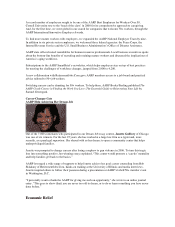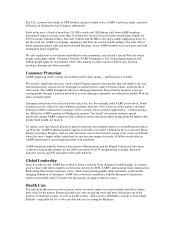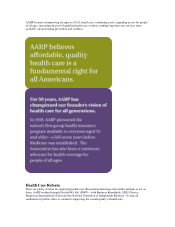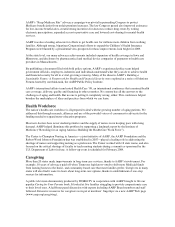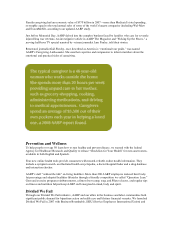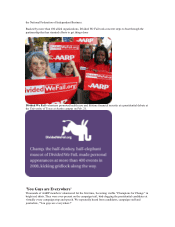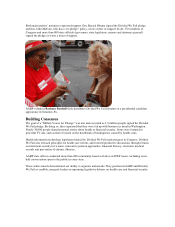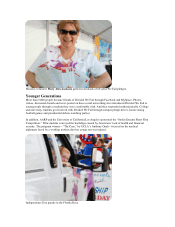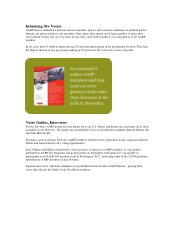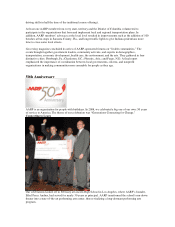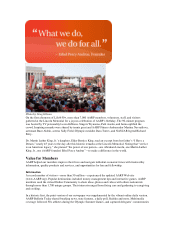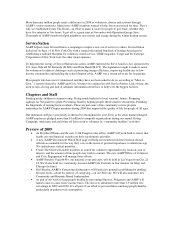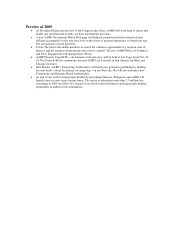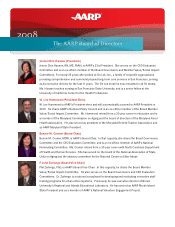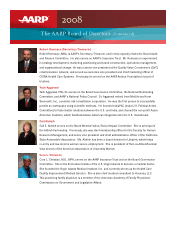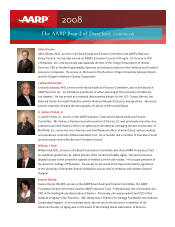AARP 2008 Annual Report Download - page 16
Download and view the complete annual report
Please find page 16 of the 2008 AARP annual report below. You can navigate through the pages in the report by either clicking on the pages listed below, or by using the keyword search tool below to find specific information within the annual report.
Housing
An attractive, affordable bungalow designed to accommodate both older adults and veterans with special
needs was one of four innovative residences honored through AARP’s second annual Livable Communities
Awards, co-sponsored with the National Association of Home Builders. The awards recognized builders,
developers, and remodelers who create safe and comfortable homes.
AARP continued to influence new generations of architecture students. We co-sponsored the Ethel Percy
Andrus House of Freedom competition with the American Institute of Architecture Students. Nearly 70
teams learned about aging trends and how to incorporate universal design principles in their work. The
contest honored AARP’s founder and the landmark universal design home that AARP showcased for
delegates to the 1961 White House Conference on Aging.
Most older people would like to stay in their homes and communities as they age. Yet doorways, stairs and
other structural barriers may prevent them from doing so, both at home and when visiting others. To
influence ongoing discussions about housing accessibility, AARP’s Public Policy Institute issued a report
on “visitability” – encouraging or requiring builders to construct new homes with zero-step entrances,
wider interior doorways and first-floor bathrooms.
Universal Design Innovation:
The 1961 ‘House of Freedom’
In 1961, AARP built one of the first model homes to incorporate universal design. The two-bedroom
“House of Freedom” (below) was constructed by AARP and the Douglas Fir Plywood Association (now
APA – The Engineered Wood Association) in downtown Washington, D.C. Its goal: to show delegates to
the landmark 1961 White House Conference on Aging housing suited to the needs of older persons at
prices they could afford.
Innovative features to promote safety and comfort abounded. No-step entries. Grab bars in the bathrooms.
Non-skid floors. Higher electrical outlets (18 inches above the floor) to minimize reaching. Wide
doorways. Easy-to-reach kitchen cabinets. Clearly, AARP was ahead of its time.
Artist’s sketch reprinted with permission of APA – The Engineered Wood Association
Mobility
When it comes to cars and driving, safety is everyone’s first priority. AARP further enhanced the popular
Driver Safety Program, which is open to drivers of all ages. Convenient online registration was introduced.
New discounted rates were made available to AARP members. And, to accommodate busy schedules, an
increased number of states offered a shorter, four-hour course (enabling participants to sharpen their


